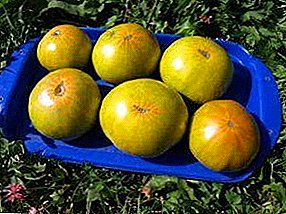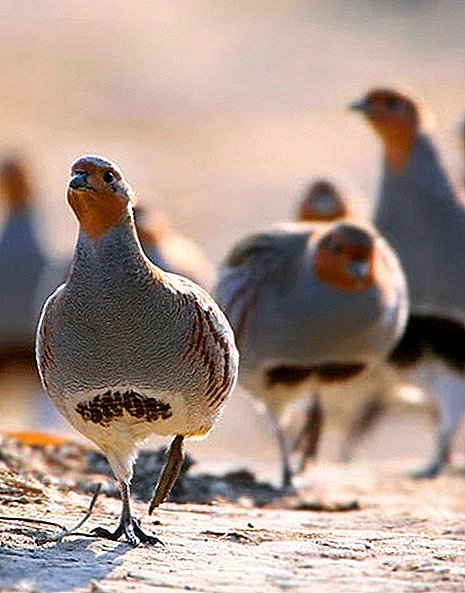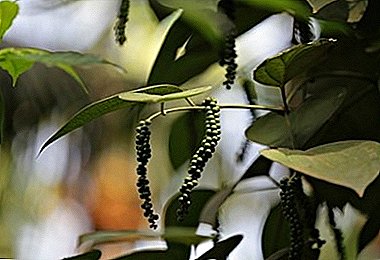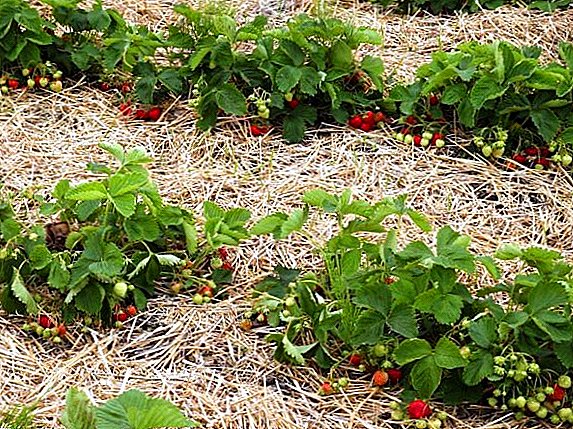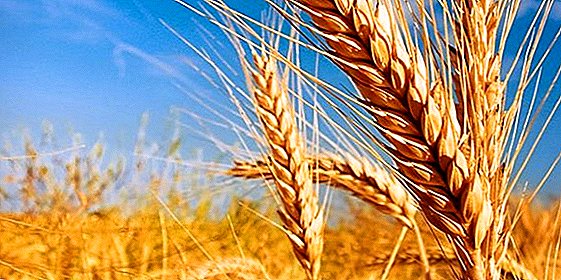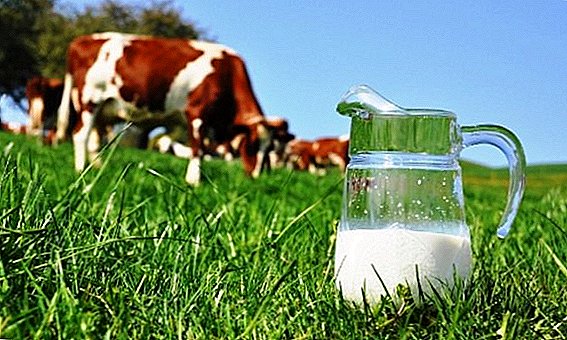 The nutritional value of milk and dairy products has been known for a long time. It is an indispensable source of many vitamins and minerals, in particular, vital calcium. The most popular and sold is considered a cow. But sometimes when buying a product, especially from private individuals, you can feel an unpleasant smell from it - the smell of a cow or acetone. Why is this happening and how to get rid of the unpleasant aroma, let's see.
The nutritional value of milk and dairy products has been known for a long time. It is an indispensable source of many vitamins and minerals, in particular, vital calcium. The most popular and sold is considered a cow. But sometimes when buying a product, especially from private individuals, you can feel an unpleasant smell from it - the smell of a cow or acetone. Why is this happening and how to get rid of the unpleasant aroma, let's see.
Properties and flavor of milk
Raw cow's milk is a homogeneous, slightly viscous liquid of white or soft beige color, viscous consistency without sediment. It is produced by the mammary glands of the animal and has a high nutritional value due to its rich mineral and vitamin composition. The product contains protein, fats, carbohydrates, is a source of vitamins E, D, H, PP, group B, amino acids, organic acids, ash substances.
However, the most valuable mineral element in its composition is calcium, which is easily absorbed by the human body, has a beneficial effect on bone and muscle tissue, the formation of the skeleton, the state of the teeth. Nutritionally, 1 liter of the product can replace 0.5 kg of meat.
Did you know? Milk of whales and seals is the fattest and most nutritious. Its fat content is 50%. At the same time, horse and donkey products are considered the most fat-free.
However, the properties, composition and fat content may vary depending on the conditions of the animal, its diet, age and time of year. On average, the indicator fat content is 3.5%. The fat content in the product is formed by special balls, which are responsible for the color of the milk and its taste.  It is believed that the higher the fat content, the more pleasant and tastier to drink milk. On an industrial scale, the percentage of fat content can be adjusted to produce a product with a certain fat content. For example, to increase the milk diluted with cream, and to reduce - specially degreased.
It is believed that the higher the fat content, the more pleasant and tastier to drink milk. On an industrial scale, the percentage of fat content can be adjusted to produce a product with a certain fat content. For example, to increase the milk diluted with cream, and to reduce - specially degreased.
Important! An integral part of milk is lactose - natural sugar. It is she who in most cases can provoke intolerance to the product and the occurrence of allergic reactions after its consumption.
Why milk smells
In order for the milk to be as tasty as possible and smell good, when keeping a cow, one should strictly follow sanitary rules. Otherwise, the product acquires an unpleasant aroma, its consistency, color and, accordingly, its composition may change.
Cow
The slightest negative changes in terms of cow maintenance, diet, health status immediately affect the taste of milk. Most often, the product acquires the flavor of a cow.  This may be due to the following reasons:
This may be due to the following reasons:
- the cow is pregnant and is preparing for calving;
- before milking, the cow udder was not thoroughly washed, due to which the dairy product acquired a cow odor;
- bad, inadequate care for animals: old, dirty litter, poor sanitation in the barn;
- during milking, something from a cow, for example, a tail, could get into the container;
- poorly washed dishes, where they are handed over.
Milk is a specific product that "like a sponge" absorbs all extraneous odors, so it is very important not only to keep the cow clean, but also the product itself.
Did you know? The protein contained in milk has a unique property of combining with toxins in the cells of the body. That is why people working in chemical enterprises are advised to regularly drink this valuable product. It is also useful to drink it in the morning after an excessive drink.
Acetone
If the smell of a cow in milk in most cases is connected with improper care of the animal and non-observance of sanitary conditions during maintenance, then the pronounced smell of acetone may indicate health problems of the female cow, in particular, metabolic disorders and the functioning of the digestive system.  In severe cases, the animal develops a dangerous disease - acetonemia or ketosis, which is an illness that is accompanied by acute metabolic disturbances, accumulation of ketone bodies in the tissues and the appearance of acetone odor in the milk of the cow's milk.
In severe cases, the animal develops a dangerous disease - acetonemia or ketosis, which is an illness that is accompanied by acute metabolic disturbances, accumulation of ketone bodies in the tissues and the appearance of acetone odor in the milk of the cow's milk.
Causes of ketosis in cattle are:
- overfeeding with concentrated feed;
- lack of hay and root crops in the diet;
- excessive consumption of feed containing protein and butyric acid;
- lack of energy in a tense lactation period.
Most often, young cows after calving suffer from ketosis, because during this period the body experiences an increased need for energy spent on the formation of milk. Accordingly, she has a need for an increased dose of glucose.
We recommend reading about what is useful and harmful cow's milk, what it depends on and how to determine the density and fat content of milk, as well as find out why milk from a cow becomes bitter.
It is possible to recognize an illness because of the state of health of the animal: it becomes sluggish, slow, practically does not react to external factors, it lasts a long time, its urine and milk acquire the smell of acetone.
Video: symptoms and methods of treatment of ketosis in a cow For the treatment of disease, it is recommended to revise the diet, reduce the consumption of high-protein feed and, conversely, increase the consumption of hay, greens and root crops.
Important! Dairy products derived from ketosis cows are prohibited.
How to get rid of the smell
Finding out the reason for the unnatural smell, you can deal with its elimination. It should be noted that removing the unpleasant odor is not easy, but possible.
To do this, it is recommended to use the following folk methods:
- to boil. If you subject the product to heat treatment, the chances are great that it will acquire a pleasant aroma, but lose a lot of useful components;
- add a little salt to neutralize the stench or cover the container with a vinegar-soaked leaf. These options do not guarantee one hundred percent successful results, but can be an alternative to the normal disposal of products.

It is best to prevent the dairy product from being saturated with extraneous odors:
- Before milking, it is recommended to monitor the cleanliness of the udder. Experts recommend the first drops when milking to hand in a separate container;
- trim the hair at the base of the nipples so that they do not fall into the container;
- milk the cow in clean clothes and clean hands;
- hold the tail of the cow, for example, with the legs;
- to control the nutrition of the animal, to avoid excessive consumption of combined feed.
Useful tips
In most cases, the aromas of dairy products of a cow depend on the attitude of the owner to the animal and the milking process.
We advise you to read about how and how many times to milk a cow.Therefore, to prevent the appearance of foreign flavor in milk, you need to follow a few tips:
- regularly carry out thorough cleaning of the udder: wash it with warm water, peel it with a clean dry cloth, cut off the wool on which dirt and manure dries;
- monitor the cleanliness of the packaging;
- After milking strain the milk, cool quickly. In the cooled product much less bacteria are formed than in the warm one. If possible, succumb to its pasteurization;
- closely monitor the state of health of the animal and with the slightest deviations contact a doctor.
 Cow's milk, as a litmus test, responds to all changes in the animal's vital activity: diet and diet, peculiarities of care and living conditions, and physical health. However, problems with low quality products can be easily avoided by ensuring the attention of the rack, and the process of milking - the particular futility and scrupulousness.
Cow's milk, as a litmus test, responds to all changes in the animal's vital activity: diet and diet, peculiarities of care and living conditions, and physical health. However, problems with low quality products can be easily avoided by ensuring the attention of the rack, and the process of milking - the particular futility and scrupulousness.Reviews from the network




